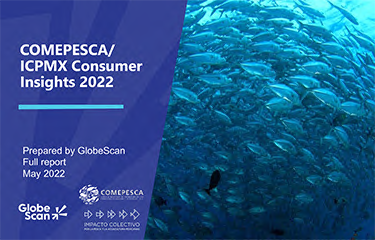Seafood consumption in Mexico is rising, along with interest in protecting the country’s marine resources, according to a recent survey conducted by Comepesca, the Mexican Council for Promotion of Seafood Consumption.
Comepesca, along with Globescan and Impacto Colectivo, a multi-stakeholder collaborative platform, conducted a survey of 1,000 Mexican residents across urban, rural, and coastal geographies, age groups and education levels. It found health and freshness still dominate consumer buying-decisions when it comes to seafood, but that Mexicans are increasingly willing to take personal action to back sustainability initiatives.
“This research shows that seafood sustainability is important for Mexican consumers and provides support to push the industry to do more to satisfy the consumer interest by producing and bringing to retail and restaurants more choices of sustainable, traceable and legal seafood products from our wild fisheries and aquaculture,” Comepesca Board President Citlali Gómez-Lepe said.
The survey found 86 percent of Mexican seafood buyers want to see the country’s seafood resources protected, and that 83 percent see buying from a trusted or traceable source as a means of doing so. The report found recognition of seafood eco-labels remains low in Mexico, but that when consumers do have information on certification, 70 percent of seafood consumers said the labels raise their trust in ensuring a more-sustainable fishery resource. This fits with what the survey found to be the most-common action taken by consumers to take action to preserve Mexico’s marine environment – “switching to a product that says it helps protect oceans/fish.”
“With these findings we are refining our communication strategies, putting more emphasis in our collaborative work with major retailers, top chefs, and restaurants to provide more information to engage consumers in being part of the solution of sustainability with their educated choices,” Citlali Gómez-Lepe said.
Impacto Colectivo Coordinator Luis Bourillón said the survey’s finding of broad consumer interest in having more information about how to keep Mexico’s marine resources sustainable presents an opportunity for additional consumer education in the future.
“We need to foster more collaboration among seafood stakeholders to move the market in [a sustainable] direction,” Bourillón said. “The base for this movement is trust and shared objectives, but the industry is more and more interested in focusing in responsible consumers and opening more to collaborate with other to do this.”
The mission of Comepesca is to promote the consumption of Mexican fish and shellfish, to create a national diet that includes the consumption of fish and aquaculture products at least three times a week, and to help reduce the current rates of malnutrition and obesity currently affecting to the country. Comepesca seeks to accomplish this through various national and regional promotion campaigns, as well as the promotion of exportable fishery resources at the international level.
Comepesca has thus far carried out five campaigns to promote consumption based around raising the brand recognition and consumption of Mexican fish and shellfish.
The organization credits its work with reversing a downward trend in annual per capita seafood consumption in Mexico, which increased from 7.16 kilograms in 2001 to 10.42 in 2007 and 13.2 kilograms in 2020. Comepesca’s latest campaign, “Pesca Con Futuro” has a focus on sustainable seafood and has been the cornerstone of a growing seafood sustainability movement in Mexico.
Comepesca’s survey found just one third of Mexicans identify themselves as seafood consumers, and of that total, only one third eats fish more than once a week at home and just 10 percent eats seafood restaurants more than once a week. But more than half of the survey’s respondents said they eat more seafood now than they did five years ago. Sixty percent of those taking the survey said price was the key reason they did not eat more seafood, though a majority said health concerns and being forced to cook more at home as a result of the COVID-19 pandemic made them want to eat more seafood.
That’s good news for Mexico’s seafood industry, which produces approximately 2.2 million metric tons of products via its fishery and aquaculture sectors with a total value of USD 2.21 billion (EUR 2.21 billion).
Photo courtesy of Comepesca







